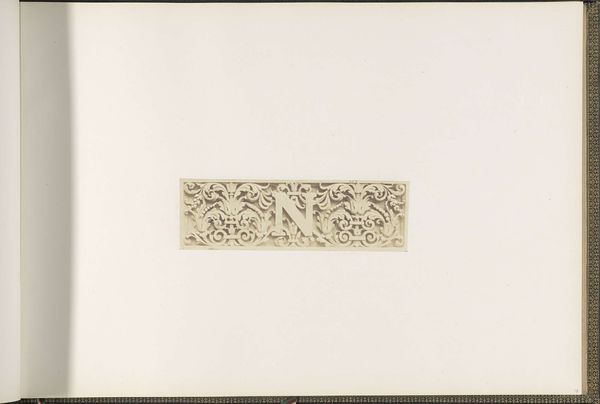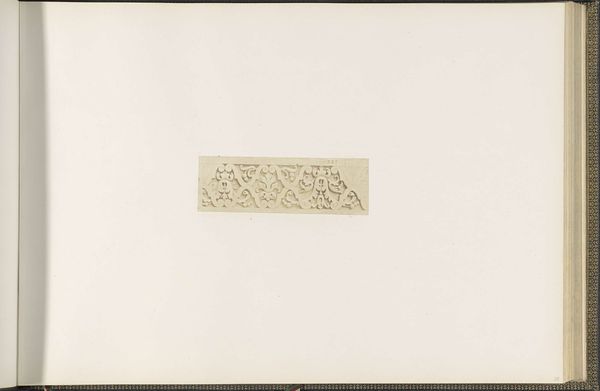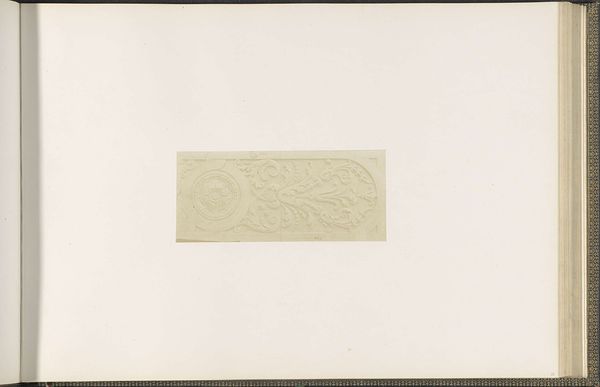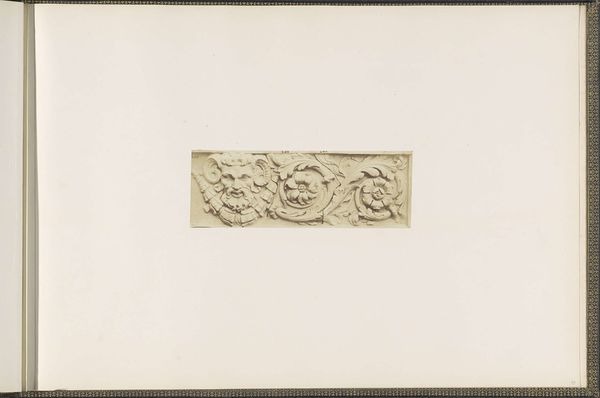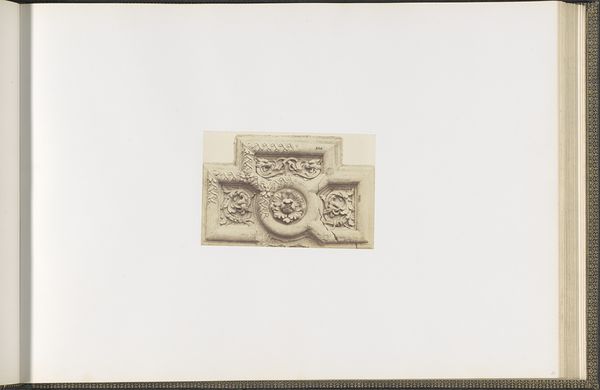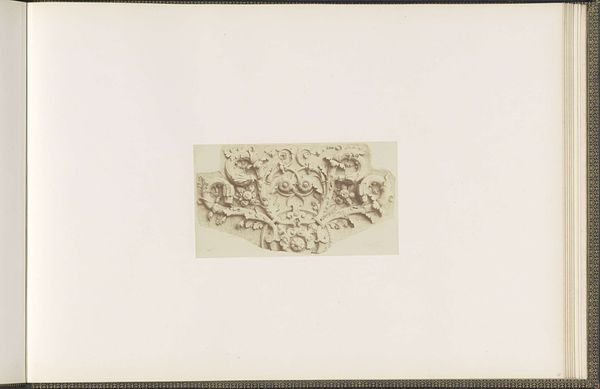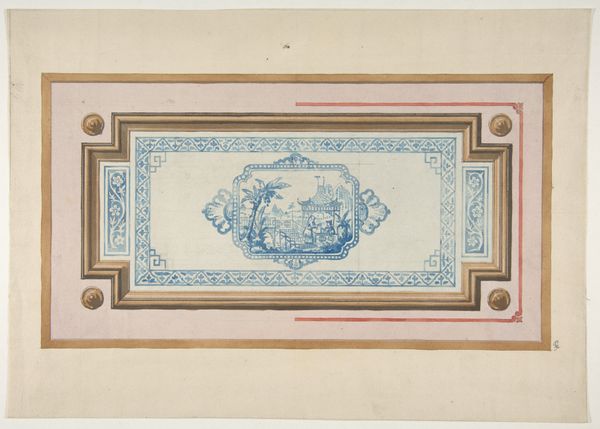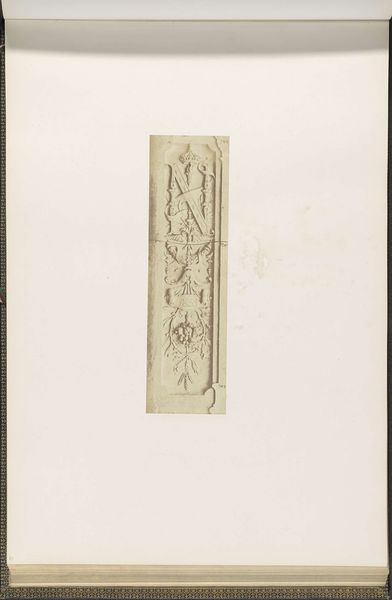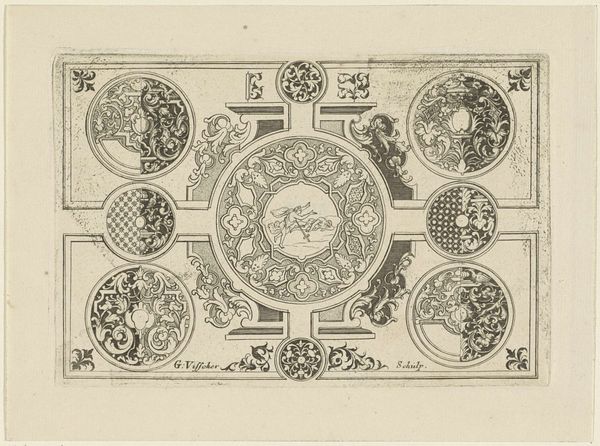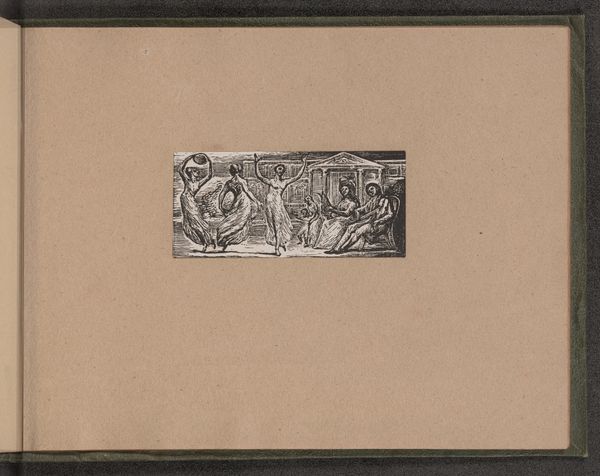
Gipsmodel voor gevelversiering op de Bibliothèque Impériale van het Palais du Louvre c. 1855 - 1857
0:00
0:00
print, relief, photography
#
portrait
#
neoclacissism
# print
#
relief
#
landscape
#
photography
#
classicism
Dimensions: height 376 mm, width 523 mm
Copyright: Rijks Museum: Open Domain
Editor: So, this is a photograph by Edouard Baldus, circa 1855 to 1857, titled "Gipsmodel voor gevelversiering op de Bibliothèque Impériale van het Palais du Louvre" – which I think translates to something like “Plaster Model for Façade Decoration on the Imperial Library of the Louvre Palace.” It has such a formal, almost severe, look to it. What do you make of it? Curator: It’s a fascinating image, especially when considering the socio-political climate of the time. The Bibliothèque Impériale, now the Bibliothèque Nationale de France, was a project deeply embedded in the Second Empire’s ambition to project power through culture and knowledge. Baldus's photograph isn’t just a record of ornamentation; it’s a document of that ambition. How does the classicism of the ornamentation speak to you? Editor: Well, it feels… weighty, imposing. The floral motifs feel a little forced within the rigid structure, like nature being pressed into service of the state. Curator: Exactly! The state-sponsored art of this period, particularly architectural embellishments like this, served to visually legitimize Napoleon III's regime by linking it to the perceived grandeur of classical empires. Think about the placement of the Library within the Louvre Palace; how does that location contribute to its political message? Editor: I suppose placing it there, next to artwork from history, reinforces the image of continuous power and legitimized rule, right? Curator: Precisely. This facade, rendered in plaster for this photographic study, would be eventually executed in stone. And that reminds us that photography itself was becoming a tool to catalogue, promote, and control the narrative around these state projects. Editor: That’s a lot to unpack. I initially just saw a picture of fancy molding! It is intriguing how it all interrelates though. Curator: Indeed. And considering the photograph's role, both within Baldus's wider practice, and as a record of the Imperial regime adds crucial context. I learned some today too! Thank you.
Comments
No comments
Be the first to comment and join the conversation on the ultimate creative platform.
